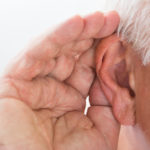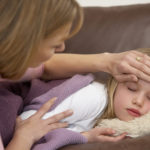Tonsillitis

What is tonsillitis?
Tonsils are small masses of tissue on either side of the back of the throat – you can sometimes see them by looking down your throat in front of a mirror. They are part of the immune system of the upper respiratory tract along with the adenoids, similar tissue that is located high in the throat behind the nose. Because of their location, tonsils can easily become infected, a condition known as tonsillitis.
Although this happens most often in children, adults are not immune. Once, tonsils and adenoids were routinely removed in children after repeated bouts of infection. Although this is less common today, doctors still recommend surgery if infections become chronic.
What are the symptoms of tonsillitis?
Infected tonsils oftentimes cause fever and chills, headache and sore throat, along with swollen and tender lymph nodes (glands) in the neck. Tonsils often become red and enlarged, sometimes with white patches of pus, which can result in breathing and swallowing difficulties. Individuals can become hoarse or lose their voice entirely, and oftentimes children with tonsillitis can have abdominal pain. One way to distinguish bacterial infections such as strep throat from those caused by viruses is the absence of cold-like symptoms – cough, runny nose, hoarseness and pink eye. The only sure way to tell which kind of sore throat a child has developed is with a rapid strep test and/or throat culture.
Although strep throat itself is a relatively minor illness, it can lead to serious health problems if you get it later in life. In rare cases it can lead to an autoimmune reaction – rheumatic fever – that can affect the joints, heart and kidneys. Rheumatic fever can cause permanent damage to the heart, especially heart valves. It can also affect the kidneys leading to a marked reduction in renal function. Although it is a rare complication of an untreated streptococcal infection of the throat, there is no way to predict when it will occur or who will be affected, and the consequences can be serious; therefore it requires prompt diagnosis and treatment.
Untreated tonsillitis can also lead to a collection of pus between the tonsils and soft tissue around it. This abscess may cover a large part of the soft palate. Rarely, the abscess may spread into the bloodstream or into the neck or chest.
What are the causes of tonsillitis?
Because of their location, tonsils and adenoids are susceptible to inhaled bacteria and viruses. They act by filtering foreign invaders as they enter through the nose and mouth, engulfing them within white blood cells. Normally, this activity does not create noticeable symptoms, but when the immune reaction rages out of control, it leads to the characteristic inflammatory pattern that is associated with redness, swelling, irritation and white dots or patches of pus.
Most cases of tonsillitis are caused by viruses such as adenovirus and coxsackievirus, as well as several viruses that cause a mono-like illness, such as cytomegalovirus (CMV), and the Ebstein-Barr virus (EBV).
In other cases, tonsillitis is caused by a bacterial infection. When tonsillitis is due to a specific type of bacteria (group A streptococci), the illness is referred to as strep throat. Strep throat occurs in about 15 percent of all cases of tonsillitis. Other, less frequent bacterial infections of the tonsils are caused by Corynebacterium haemolvyticus, Mycoplasma pneumoniae, Corynbacterium diphtheriae, Chlamydia trachomitis and Neisseria gonnorrhoeae as well as other forms of streptococci (i.e. groups C, G, and F).
What is the conventional treatment of tonsillitis?
Tonsillitis caused by a virus is typically treated with conservative self-care treatments and symptomatic relief. Strep and other bacterial throat infections should be treated with a course of antibiotics, usually penicillin or amoxicillin, which typically needs 10 days or so to be completed. Other antibiotics may be effective with a shorter course – between five and seven days. If adequately treated, patients will typically feel better within one to two days of taking the medication. One may be tempted to stop taking antibiotic therapy; however, it is essential to complete the full course of treatment (10 days for amoxicillin) prescribed by your doctor. Stopping medication early may cause the infection to come back or to cause complications. If left untreated or incompletely treated, a strep infection can cause damage to the heart and kidneys.
Patients who test positive for strep should complete at least 24 hours of antibiotic treatment before returning to work, school or child care. Antibiotics may be given by injection if swallowing is too difficult, in which case, treatment with steroid medications may be offered to reduce swelling.
Although surgery is no longer the standard treatment for tonsillitis, removing the tonsils (tonsillectomy) may be recommended under certain situations. Tonsillectomy is rarely needed for adults and has a higher incidence of complications. During childhood, surgery may be recommended when a child’s health is being compromised with recurrent infections or if they are causing significant problems with speech, hearing or breathing at night. Surgery is considered for a child who has had more than seven serious throat infections within a year, five cases of strep throat every year for two years, or three or more throat infections per year over a three-year span. Tonsillectomy may also be indicated in abscesses that don’t improve with antibiotic therapy or if the infection is compromising the airway and causing difficulty breathing.
A tonsillectomy with or without adenoidectomy can typically be done on an outpatient basis, and requires minimal intervention or observation. Most patients go home the same day they’ve had surgery. Ear and throat pain is fairly typical following surgery but can be relieved with ice and analgesics. Soft foods and a liquid diet are typically the norm for the first several days; however patients can experience alternating good and bad days for two weeks after surgery. Bleeding can be a complication as can an increased susceptibility to infections, which means keeping away from crowds or ill people for at least a week.
What therapies does Dr. Weil recommend for tonsillitis?
Because respiratory secretions that can get on any surface spread tonsillitis, frequent hand washing is the best way to prevent it. Wash your hands often, and encourage your children to do the same. Other commonsense precautions apply as well, such as covering your mouth and nose when you cough, not sharing drinking glasses or eating utensils, and avoiding close contact with anyone who’s sick. Individuals with bacterial tonsillitis should also discard their toothbrushes and buy a new one to use.
While the vast majority of tonsillitis is viral in origin and supportive therapy is the only treatment, the treatment for bacterial infections is antibiotics. To reduce susceptibility to sore throats, try to build up the immune system by using the Chinese herb astragalus (Astragalus membranaceous) during cold and flu season. You can get astragalus in tincture form or in capsules at the health food store. Give children one half the adult dose. This herb is safe for regular use. Also try gargling with a mixture of half hot water and half hydrogen peroxide or with warm salt water (one-quarter teaspoon salt to one cup of warm water) several times a day.












